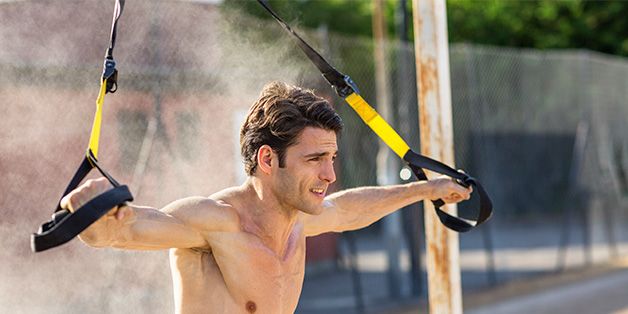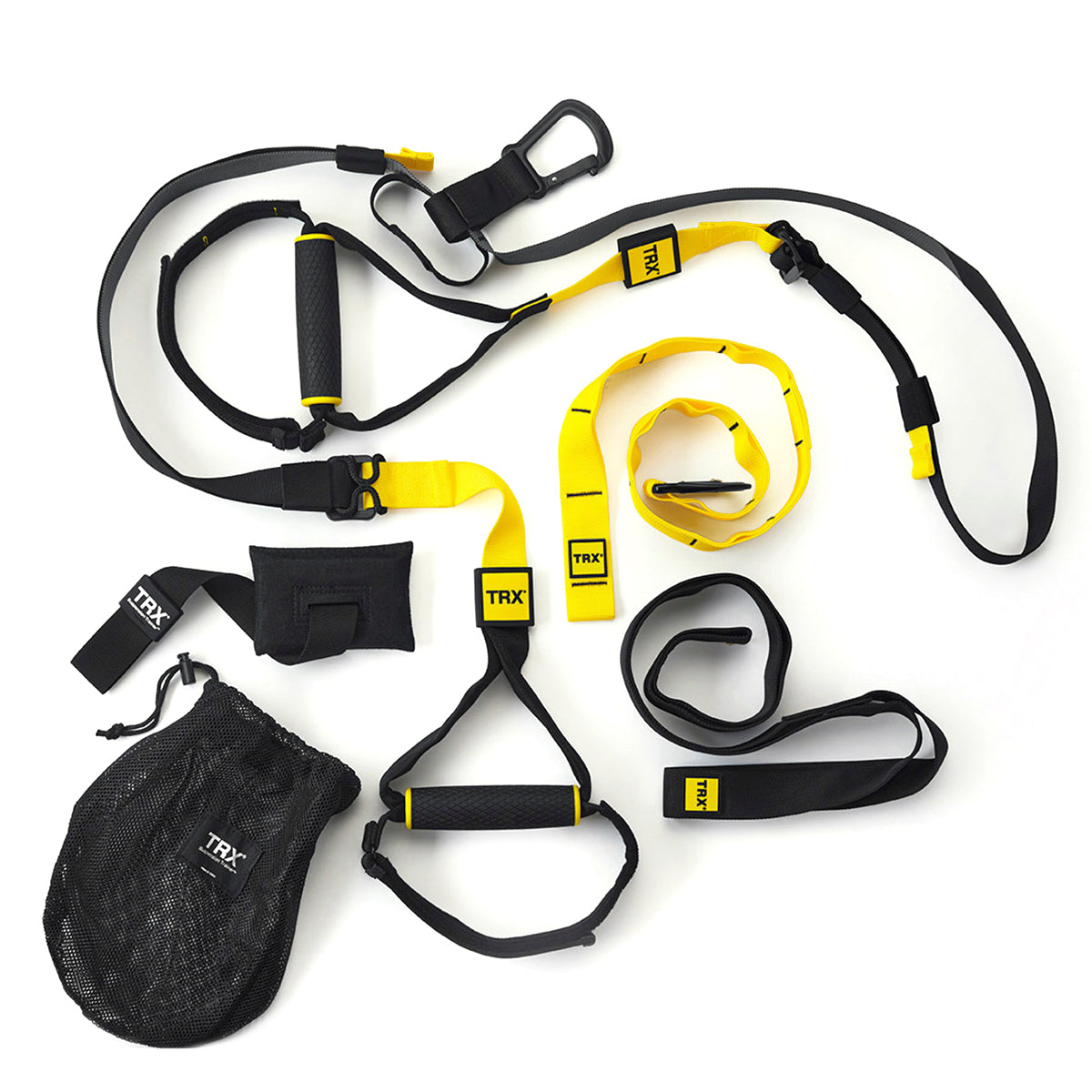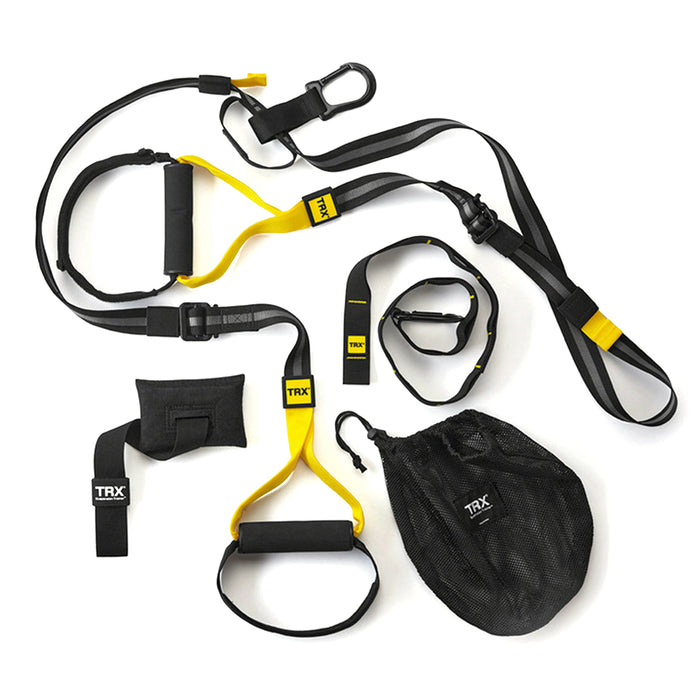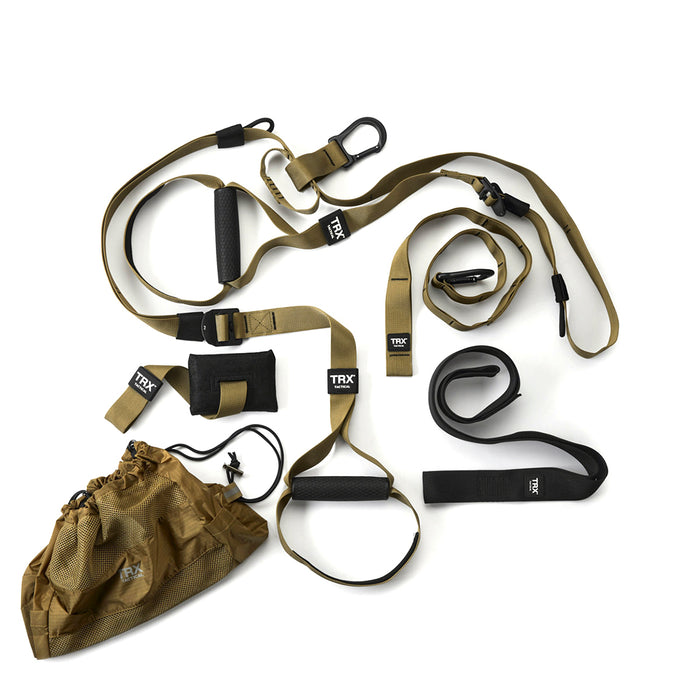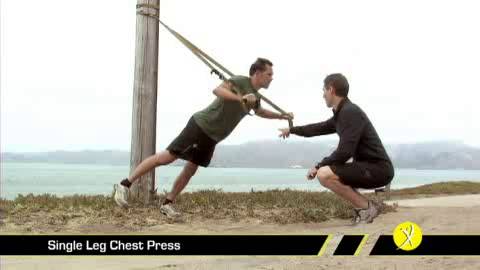Combo #1:
- TRX Mid Row (w/Band, Shoulders Abducted)
- TRX Mid Row (Shoulders Abducted)
- TRX Mid Row (Adduction to Abduction)
This cool combo emphasizes a pull pattern with horizontal abduction to emphasize the posterior deltoids, rhomboids and middle trapezius. It's great for athletes seeking to improve posture or prevent shoulder injuries (volleyball, racquet athletes, baseball pitchers). The first exercise in the sequence uses bodyweight plus band resistance. The second exercise uses bodyweight only as the resistance, and the third exercise makes use of the fact the athlete is stronger when pulling with the shoulder joint in adduction compared to abduction. Thus, the concentric portion of the row is performed with arms adducted. Subsequently, in the contracted position, the upper arms are shifted into the abducted position and the posterior deltoids are challenged eccentrically.
Combo #2:
- TRX Chest Fly
- TRX Chest Fly (Eccentric Emphasis)
- TRX Chest Press
This cool combo emphasizes the pectoralis major, anterior deltoids and biceps brachii in horizontal adduction. It also places a great challenge on the core muscles in an anti-extension function. The first exercise in the sequence is a regular chest fly. The second exercise emphasizes the eccentric portion of the fly. In the bottom position, the elbows are brought in and the athlete presses him/herself up in a chest press fashion. The third exercise recruits the target muscles in a less challenging movement, the regular chest press (the shoulder joint can be in the adducted or abducted position).
Combo #3:
- TRX Hip Airplane
- TRX Lunge
- TRX Single Leg Squat
In this cool combo, the unique benefits of placing the back foot in the cradle includes natural perturbations through the foot and also your center of gravity is moved back compared to a single leg squat. If the athlete moves to a point where the foot cradle is creating a slight backward pull, there is also an interesting increased activation of the tibialis anterior, a muscle that is often under worked in many training programs.
The first exercise emphasizes the gluteus maximus as extensor, abductor and external rotator of the hip joint. The second exercise is a regular lunge, and the third exercise is a regular single leg squat, where the foot is no longer in the foot cradle, thus the center of gravity is moved forward and there is an increased emphasis on the quadriceps muscles.
When the movements are optimally sequenced, combination exercises allow for a unique blend of medium to high intensity and high volume. Another fan of combination exercises? TRX Director of Training and Development Fraser Quelch, who's shared some very cool combos with us in the past.
Try one of our TRX products today:
References:
- McGill S. Groove Motion/motor patterns and corrective exercise. Ultimate Back Fitness and Performance Chap 10, p 207. Backfitpro Inc. 2009
Karsten Jensen has been a strength and conditioning coach for 15 years (www.yestostrength.com). He has a Master’s degree in Exercise Physiology and is a Chek Practitioner Level 2 and a Chek Holistic Lifestyle Coach Level 3. Karsten worked for the Danish National Elite Sports Institution from 2000 to 2007, rendering his service to nationally and internationally ranked athletes from various sports. He is currently based in Mississauga, Ontario.

